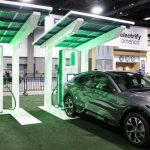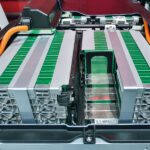
Last week, Dexter Liu completed a well-written three-part analysis on the electric vehicle and why it is not ready for prime time. I agree. Here are additional considerations. Since the Tesla Model 3 weighs about the same as the Chevrolet Equinox, some interesting comparisons can be studied. The Tesla has a 126-mile range and takes 12 hours to recharge with a 240 VAC charging station. It uses a heat pump to heat and cool the car, requiring additional power from the car battery and thus diminishing the mileage range. Maximum mileage will only occur when neither heating nor cooling is required. The Equinox has a range of 430 miles, which is pretty much independent of whether the air conditioning or heating systems are used.
Perhaps this is a good time for a refresher on how things actually work in the real world. In other words, you cannot look at one piece of a puzzle and ignore all the other pieces. For example, the people who have jumped on the electric-powered vehicles bandwagon point out that automobile carbon emissions are low or non-existent. To have this view is to ignore the fact that well over half of US electricity production comes from coal and gas. Therefore, electric cars actually shift the carbon dioxide pollution to the electric utilities and raise their carbon emissions instead! Yet the government has set more drastic emission standards for the electric utilities to meet in the future.
As I have indicated in previous articles, nuclear power is a great option. BUT you say, “What about the disposal of the spent uranium fuel rods? There is no safe storage depository!” Well, technically that is a fact as the US Department of Energy has not LICENSED either of the two depositories that exist today. One was constructed in a salt mine in New Mexico to protect nuclear fuel canisters from damage due to earthquakes, provide fire suppression, and avoid all radiation leaks. The other is in Yucca Flats, Nevada. Yes, this is the area where nuclear bombs were tested above and below ground. Two US Congressional members from NV got the Yucca Flats facility shut down. To my knowledge, there has not been any significant release of radioactivity from those underground tests many years ago, although the above-ground tests spread radiation as far as the Atlantic Ocean. None of the atomic tests in New Mexico, Colorado, and Mississippi were above ground, thus only a negligible amount of radiation was released into the atmosphere.
Well then, you say, “We’ll build lots of wind turbines and solar projects.” Not so fast. Let’s look at reality. Wind turbine blades, which range from about 150 feet to over 200 feet long, have to be replaced sometime between 20 and 40 years. And those turbine blades cannot be recycled! They have to be disposed of in a landfill. Remember that the blades can ice up and stop turning as they did in Texas last winter. The wind turbines require gear boxes to speed up the rpms of the rotating blades to get up to 1800 rpm, which generates 60 Hertz AC current, the standard AC frequency in the US, Canada, and Mexico. Guess what? To make the turbines more efficient, those gear boxes use a special synthetic oil to reduce friction; the oil leaks out at the rate of about two gallons per turbine per year. That oil has the effect of a greenhouse gas which, get this, is 22,500 times more problematic than carbon dioxide!
Photovoltaic solar panels have a life span of only 20 to 25 years due the high temperatures to which the Sun subjects the silicon. It is generally calculated that a solar panel is no longer useful for commercial power generation when its voltage drops below 80% of its original output. Solar panels are infused with cadmium, a poisonous metal that cannot be recycled and must be placed in non-leaking landfills. Health problems from cadmium include fostering insulin resistance, and cancers such as breast, prostate, lung, and pancreatic. Some research also indicates a link to non-Hodgkins lymphoma. And think about this for a moment. I have not heard of any research to determine how much these megawatt solar farms raise the atmospheric air temperature in the area where they are located or how much they collectively contribute to earth warming.
Next week, we’ll examine the unique power characteristics of AC and DC electricity.
Related posts:

Dexter is a frequent contributor to the County Compass.













































